With the lack of rain recently our beautiful sun orchids and the other spring orchids came to an abrupt finish. Some people were lucky to see the Blotched Sun Orchid Thelymitra benthamiana, in full flower, the Blue Star Sun Orchid, T.holmesii, and the new to our area Flat-leaf Sun Orchid, T. latifolia. These three species were very exciting to see.
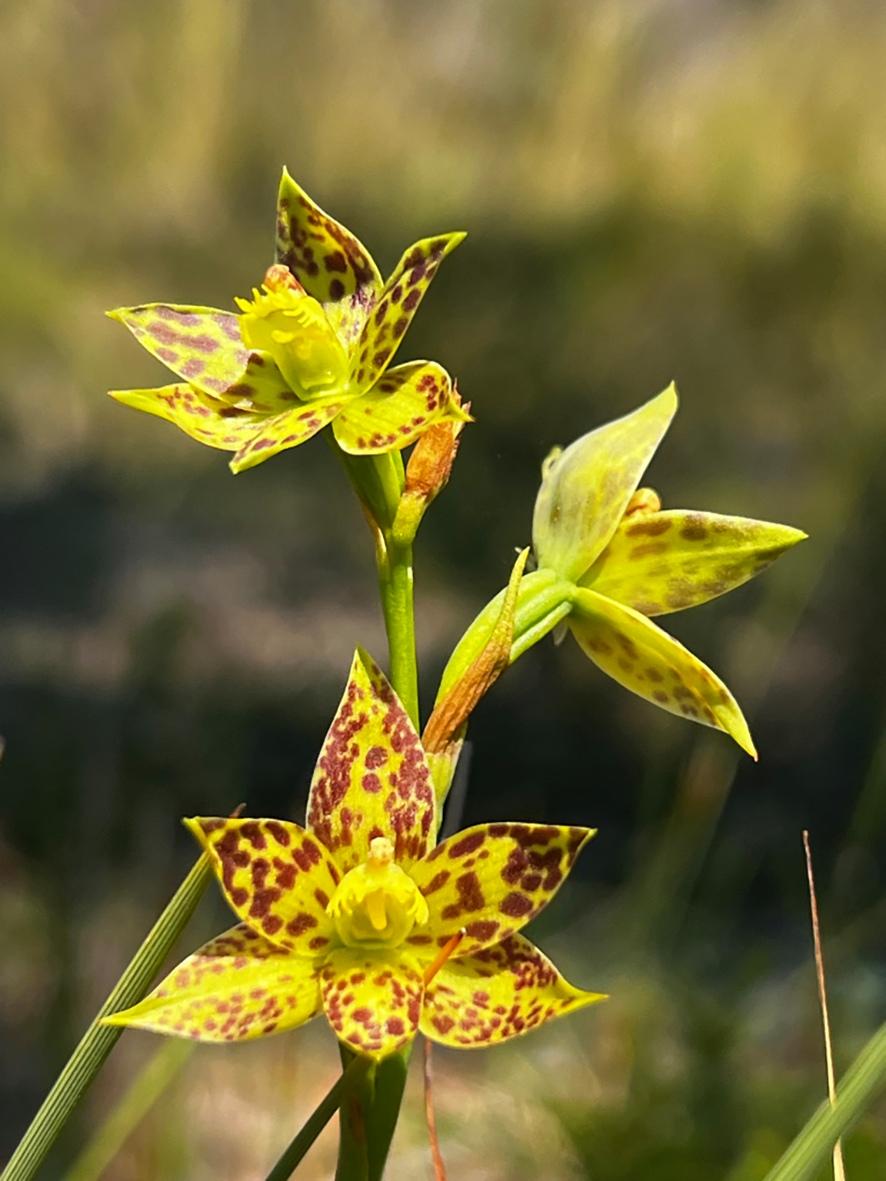
Blotched Sun Orchid
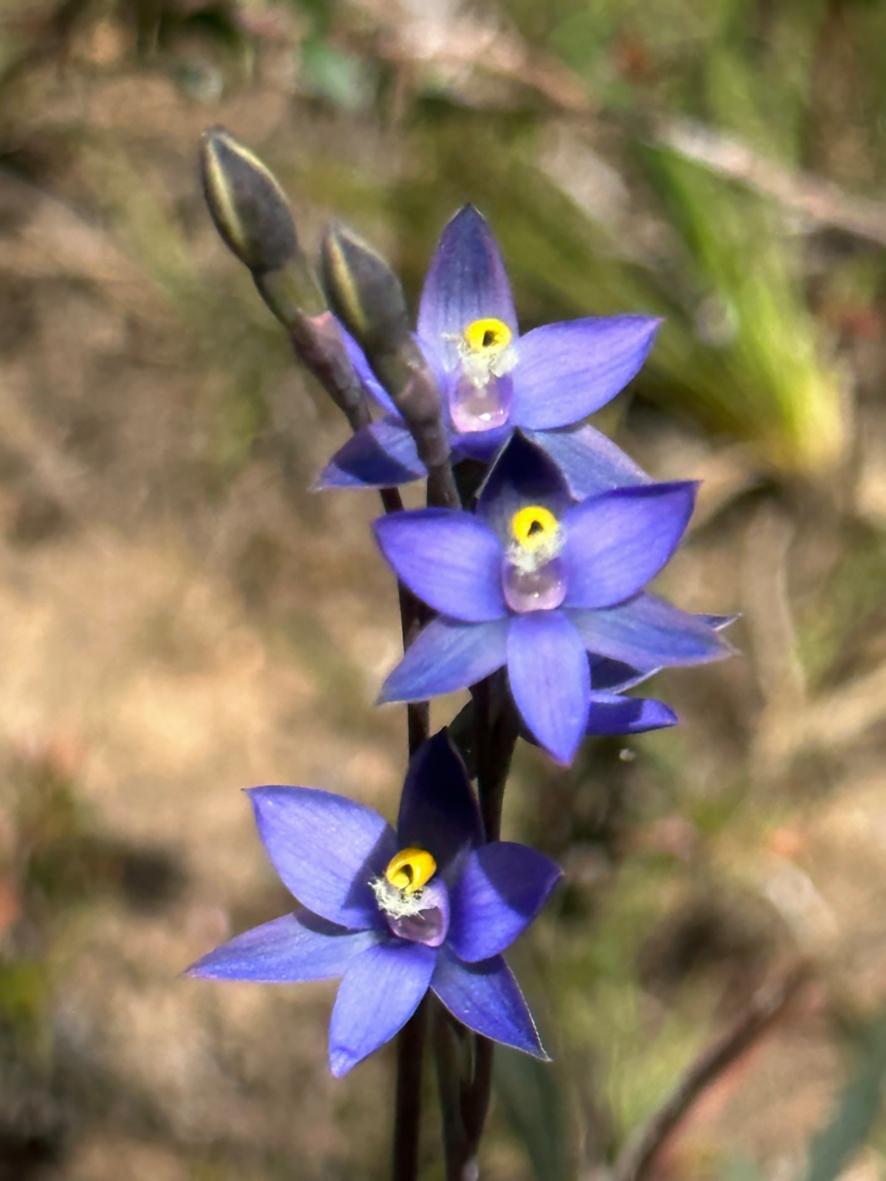
Blue Star Sun Orchid
The Large Duck, Caleana major, and Small Duck, C. minor, have put on lovely displays with their shiny, duck-like flowers. The Bearded Orchids, Calochilus sp., had a very short season with no recorded sightings of Naked Beard, Calochilus imberbis, this year. So far there have been just a few Leek Orchids in the burnt area on Harvey St. There are still some we hope to see, especially if we have some rain, such as the Austral Leek Orchid, Prasophyllum australe, or the Elegant Leek Orchid, P. barnettii.

Austral Leek Orchid
The Hyacinth Orchids are in bud and the asparagus-like buds are noticeable. Of the two species the Rosy Hyacinth, Dipodium roseum, is more common and usually appears first.
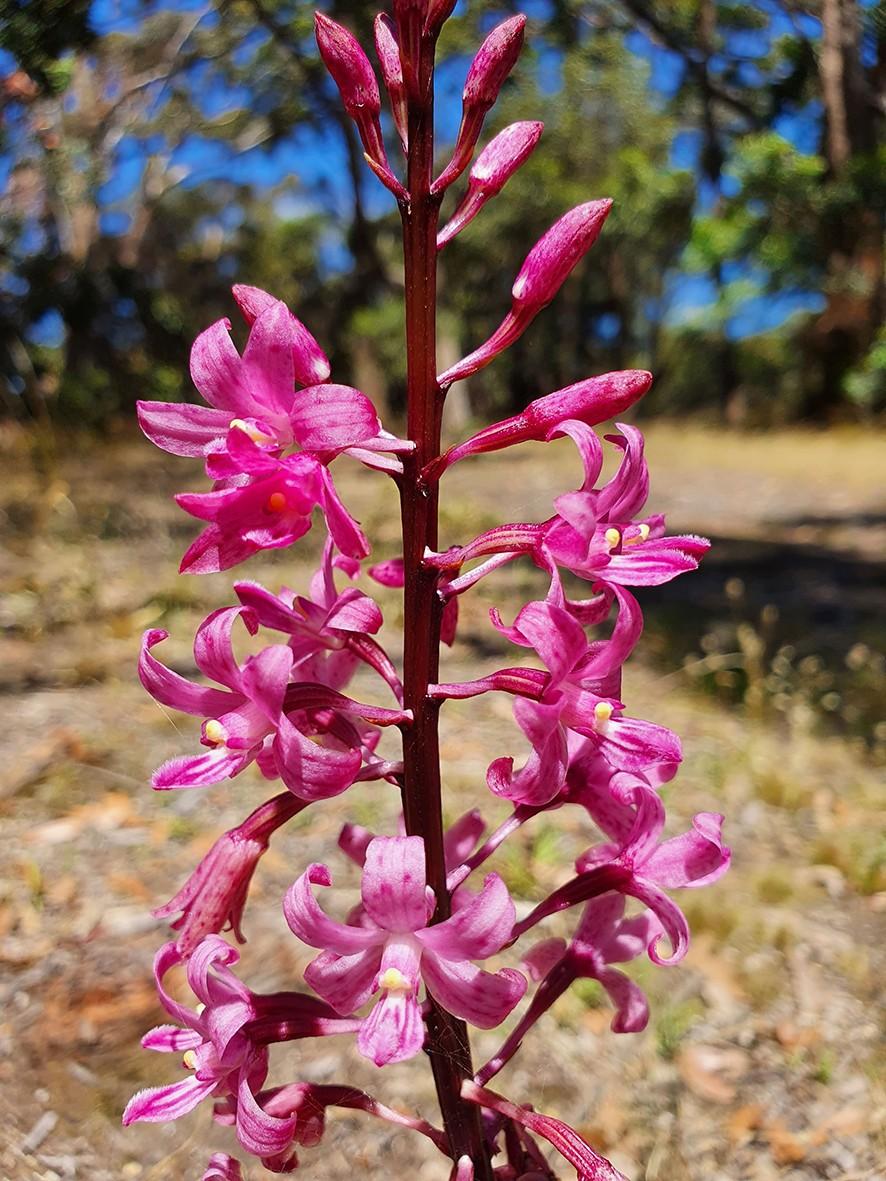
Rosy Hyacinth Orchid
The Spotted Hyacinth, D. pardalinum, has a red spotted labellum with white hairs, so look carefully at these lovely orchids. The labellum of the Rosy is pink striped with pink hairs.
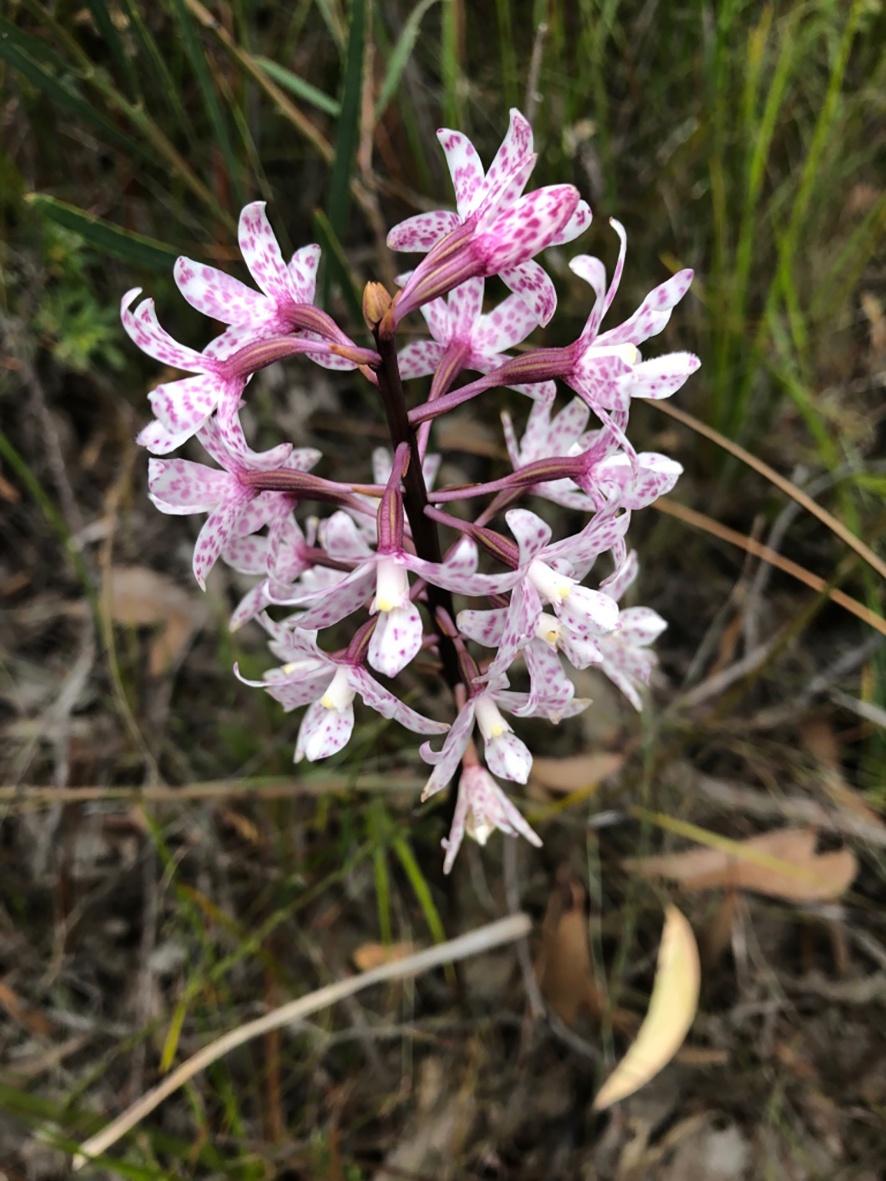
Spotted Hyacinth Orchid
There are still lots to look for though in the next month or two. The Large Tongue Orchid, Cryptostylis subulata, has a beautiful red and yellow flower with large leaves. It likes damp areas, and you need to look carefully to find it amongst the surrounding vegetation. The easiest place to see it is in an open, slightly dampish area in Moggs Ck where it is growing happily.

Large Tongue Orchid
Another interesting orchid that flowers soon is the Horned Orchid, Orthoceras strictum. This is also difficult to see initially as it blends into its grassy surroundings. The Horned Orchid is mainly a green and brown orchid, and the spreading lateral sepals give it a horned appearance.
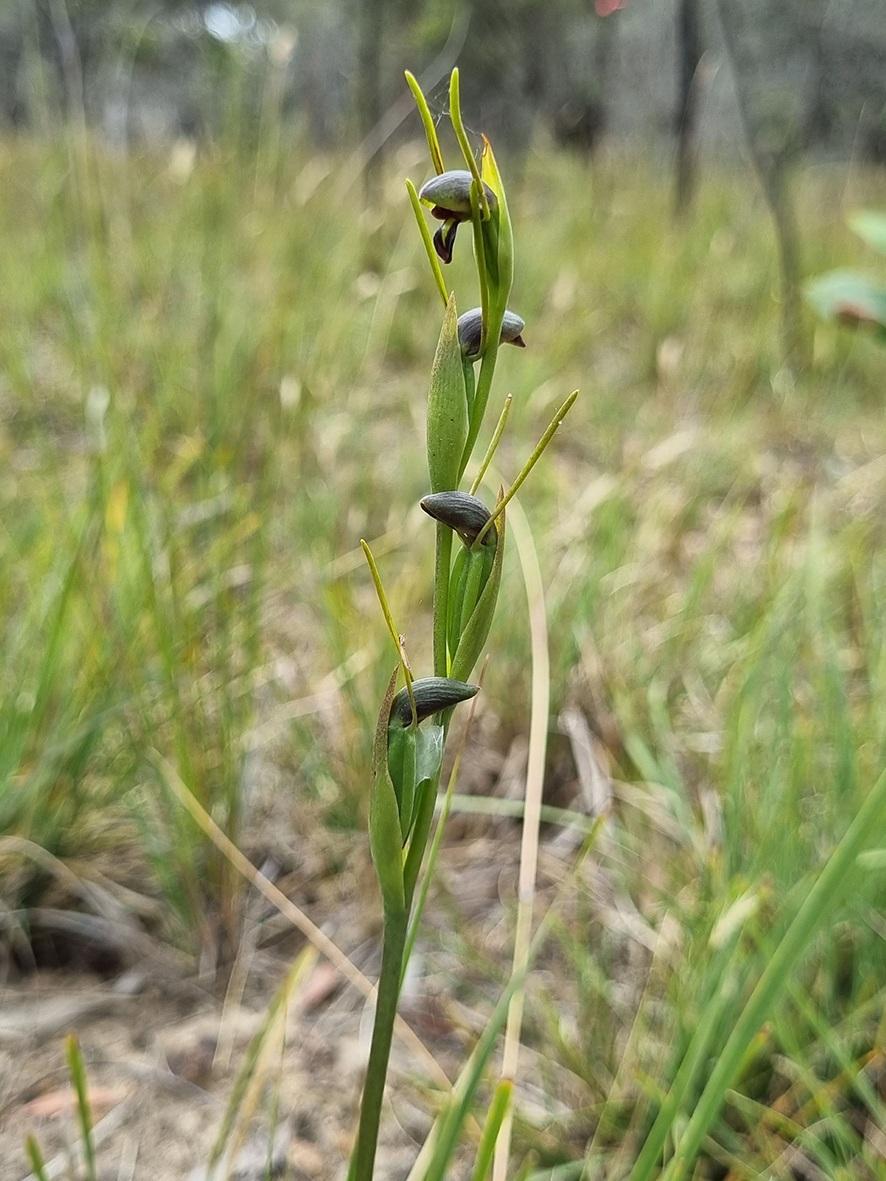
Horned Orchid
Cinnamon Bells, Gastrodia sesamoides, are always a pleasure to see with their cinnamon-coloured bell-like flowers. Tall Cinnamon Bells, G. procera, a taller orchid, grows more in the tall forests of the Otways while the shorter ones grow more in our parts of the forest.

Cinnamon Bells
Tiny Elbow Orchids, Thynninorchis huntianus, seem to grow along the sides of tracks where there is more space and less competition. The tiny, unusual flower has a hinged labellum designed to attract the male wasp. When the wasp lands on the labellum it’s swung against the column and pollen is transferred.
There is one late flowering Greenhood which was discovered again last year after many years. This is the Dark-tipped Greenhood, Pterostylis atrans, which has a dark-tipped, pointed hood and the greenhood rosette is quite small. Look for it in forested areas.
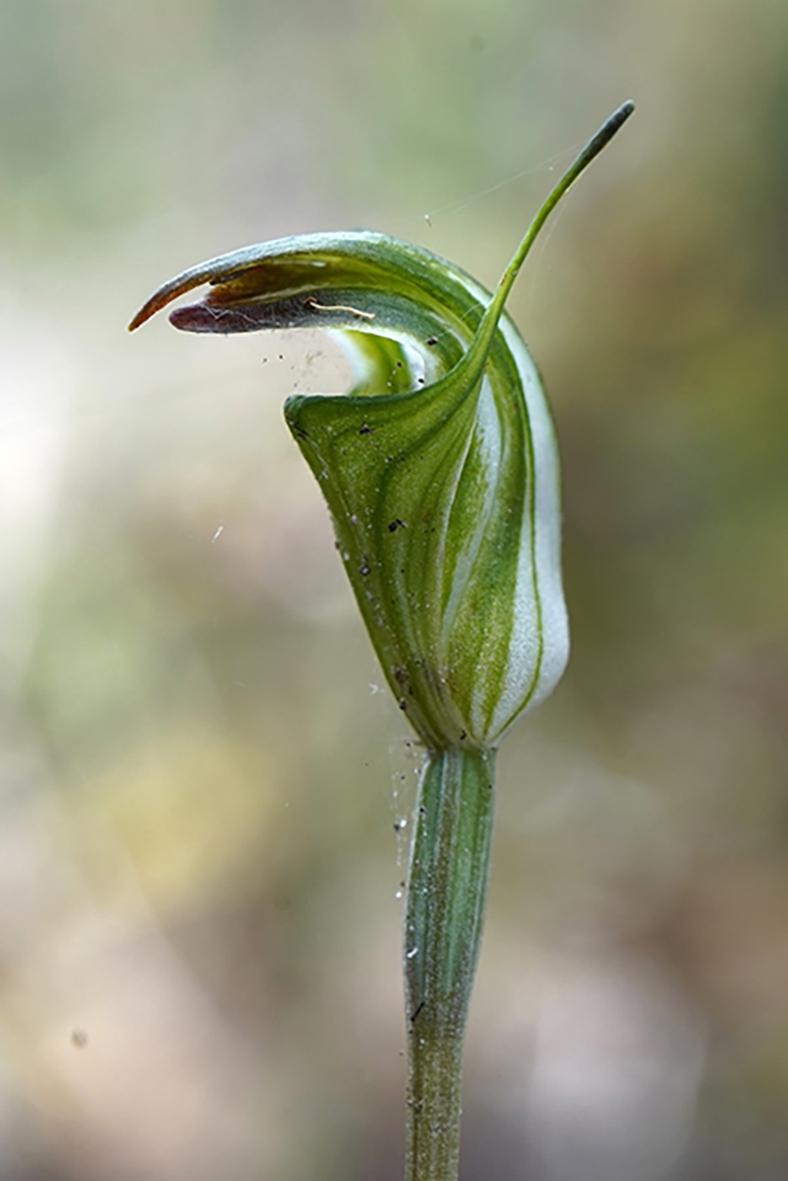
Dark-tipped Greenhood
A late flowering Caladenia is the Black-tongue Caladenia, C. congesta, which is occasionally seen in the Eastern View area. It can also be reliably seen at Forrest. It can grow to 30 cm, has bright pink flowers with black shiny calli covering the narrow labellum.
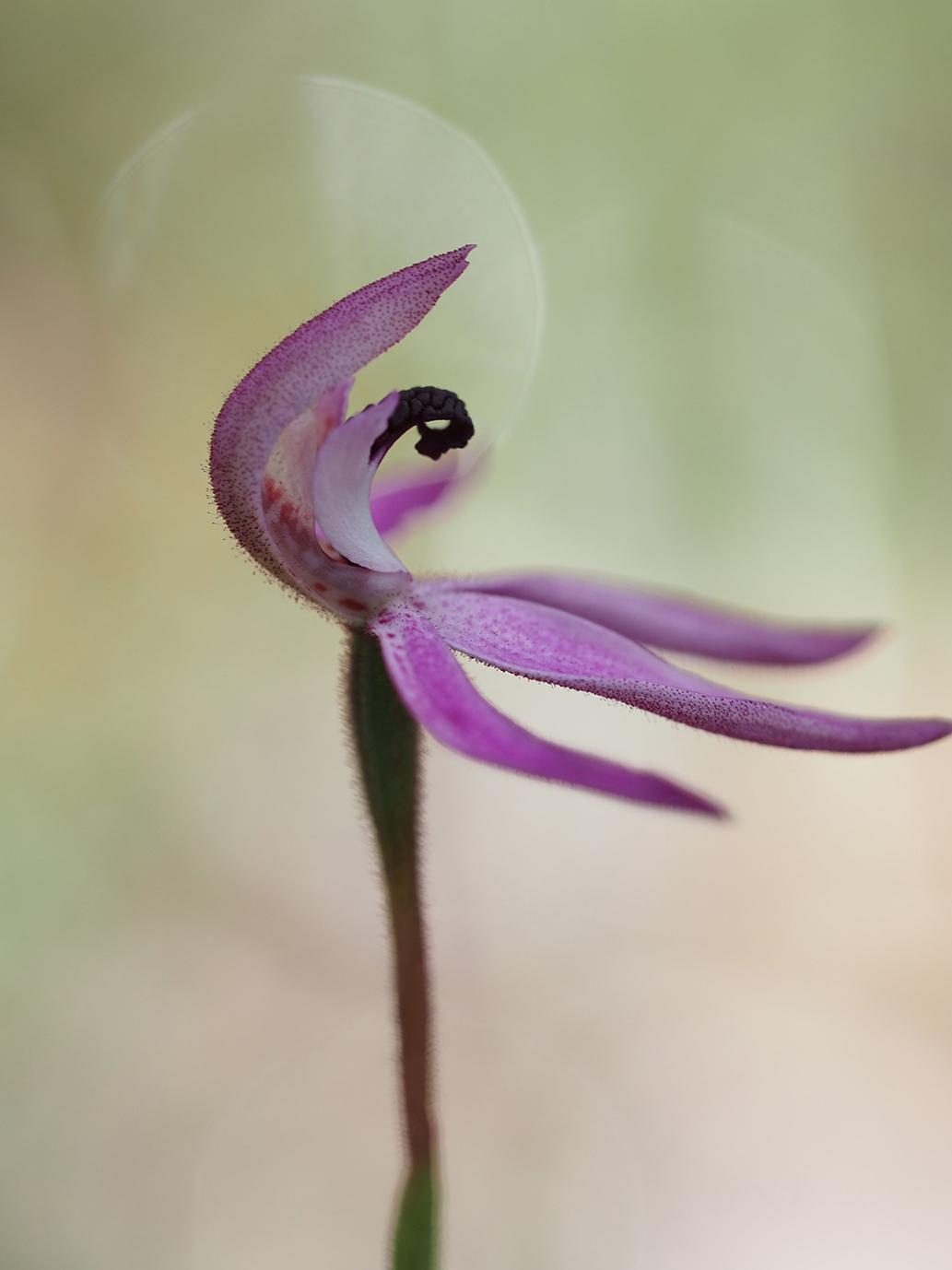
Black-tongue Caladenia
So, there are some interesting orchids to look out for over the next few months.
Please let us know of any of your interesting orchid experiences. All of our orchids are documented and photographed in Orchids of the Anglesea District. The new edition costing $30.00 is available from the Angair Natural History Centre on Monday and Thursday mornings, online through the Angair website and from Anglesea News & Lotto and Great Escape Books in Aireys Inlet.
Margaret MacDonald margmacmoggs@icloud.com Alison Watson alisonw577@gmail.com